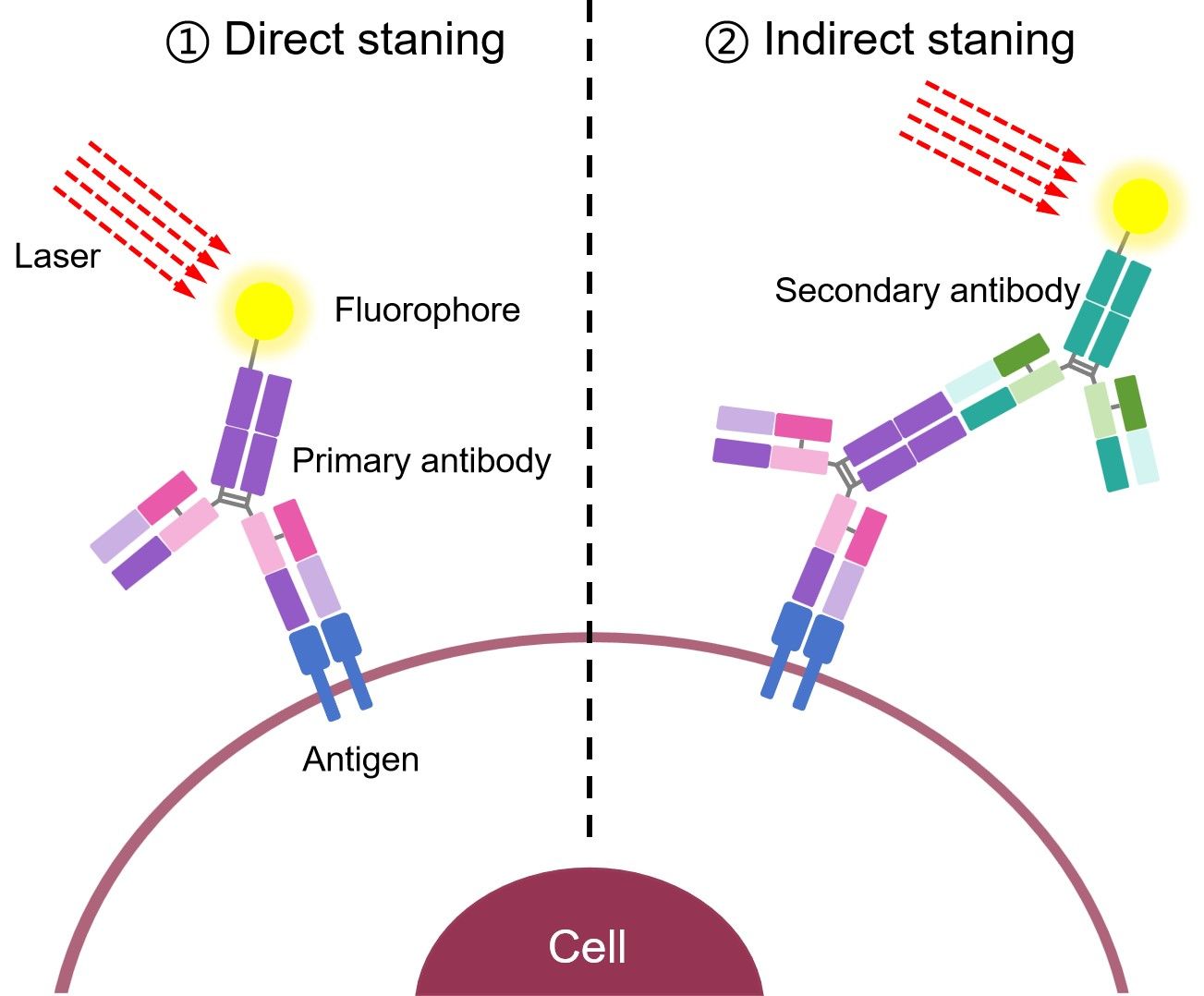Direct Staining Flow Cytometry
Flow cytometry can be performed directly or indirectly. Direct staining flow cytometry utilizes labeled primary antibody as one-step staining and indirect staining flow cytometry needs an unlabeled primary antibody and an extra labeled secondary antibody acting as detector antibody. Click here for the summary about Indirect Staining Flow Cytometry.
Direct Staining
Each human cell expresses thousands of cell surface antigens that specify their cell type, biological function, development stage, and so forth. Cells from different organs have characteristic surface antigens, and we can utilize fluorochrome-conjugated antibodies specific for these surface markers to analyze these cells directly by flow cytometry. In direct immunofluorescence staining, cells are incubated with an antibody directly conjugated to a fluorochrome such as FITC and PerCP.
Direct staining has the advantage of requiring only one antibody incubation step and therefore eliminates the possibility of non-specific binding from a secondary antibody. It is also more convenient for multiplex targets staining. This approach is extremely useful for intracellular staining, where large antibody-fluorochrome complexes including secondary antibodies can become trapped and result in non-specific binding, or they may fail to enter the cell which results in no detection.

Advantages
During direct detection, a labeled primary antibody is used, and this method provides several clear advantages:
- Non-specific binding is avoided since secondary antibodies are not used
- Multiplexing is possible with antibodies from the same species
- Faster since there is no secondary antibody incubation step and therefore fewer wash steps
- Data quality is improved through assay simplification
Disadvantages
- No signal amplification from secondary antibody
Best for
- Intracellular staining
Direct staining is one of the most common and simplest staining methods in flow cytometry assay, where live or fixed cells are incubated with directly labeled antibodies against cell surface antigens. Protocol of Direct Staining Flow Cytometry is available for you. It mainly includes the following parts:
- Protocol of Direct Immunofluorescence Staining Surface Epitopes of Cells and Blood
- Protocol of Direct Immunofluorescence Staining of Immunoglobulin Light Chains on B Lymphocytes in Whole Blood
A successful staining procedure is dependent on optimization of experimental conditions which includes titering of antibodies, optimized fixation and permeabilization procedures, and setting up appropriate controls. Once your samples are prepared as single cell suspensions and you have all your controls ready, simply run it through the flow cytometer according to the instrument's instructions to obtain your data results. If you get in trouble, please refer to our Troubleshooting of Direct Staining Flow Cytometry.


